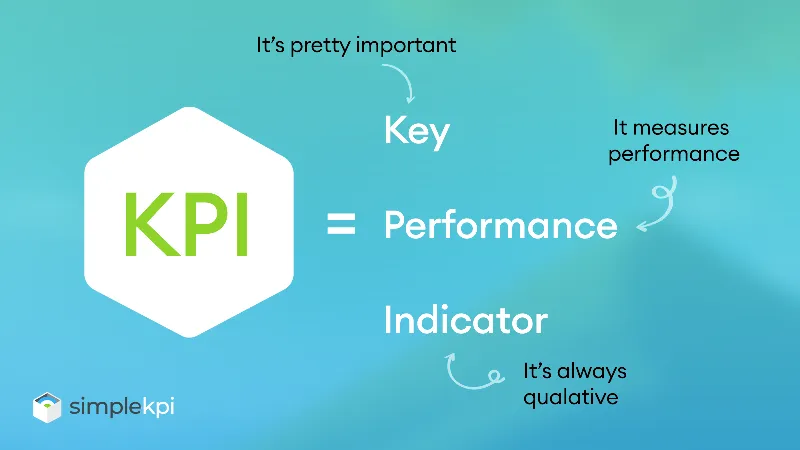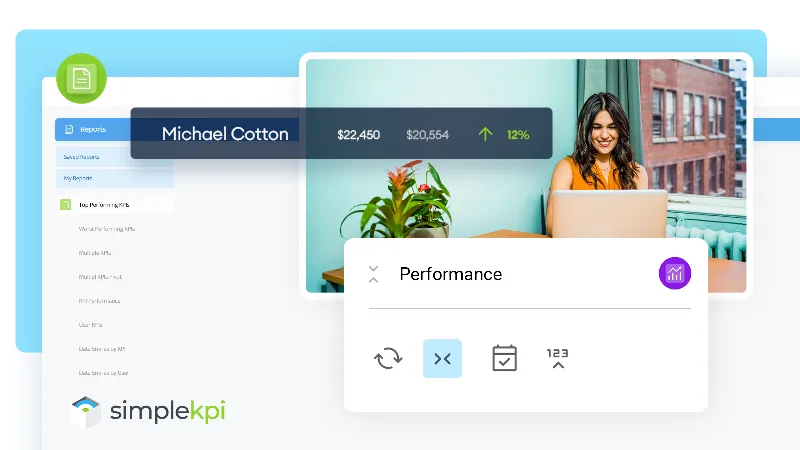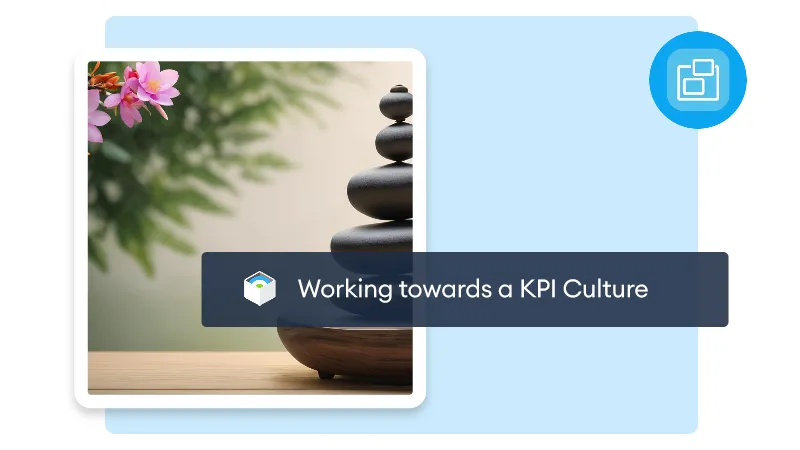Luck is not an option
It's only natural to feel like implementing any tracking initiative is an attempt to cage in your employees. And It's only natural for employees to resist such initiatives, ranging from mild disgruntlement to completely diminishing morale. The level of pushback is often proportional to the perceived threat to employees' creativity and autonomy. However, a KPI tracking initiative can be fair, level, and productive with the right approach.
So, how do you design and implement an employee KPI tracking initiative that is transparent, beneficial, and gets buy-in from all staff? One which is understood to benefit both the company and staff alike?
This guide is a comprehensive resource for employers and employees alike. It covers the importance of tracking KPIs, the pros and cons, how to choose the right KPIs, and how to introduce them to employees without creating a culture of mistrust. It focuses on developing the following four main areas:
- Communicating the goals and benefits of the initiative to employees, with emphasis on preserving creativity while avoiding micromanaging.
- Identify the key performance indicators that will be tracked and how staff should be involved in this process.
- Implement a tracking system that is easy to use and provides employees with involvement and regular feedback on the process.
- Track the initiative's success with employee feedback to ensure it meets their needs and expectations.
In this guide:
What are Employee KPIs?
Employee KPIs are like a compass that helps you navigate your business based on performance.

They can be anything from sales targets to customer satisfaction rates. They will help you understand how your employees contribute to your business and how you can optimize its performance.
Typically, these KPIs will track goals and measure progress toward achieving them. It's like having a personal trainer for your business!
For example, if you're running a restaurant, you might track KPIs like customer satisfaction rates, table turnover times, and food quality scores. By tracking these KPIs, you can identify areas for improvement and optimize your restaurant's performance. These KPIs are also used to motivate and reward your employees for their hard work.
Are you absolutely new to KPIs? – then read our guide to Key Performance Indicators for a complete low down.
Let's talk about the Pros and Cons of Employee KPI Tracking
So tracking employee KPIs sounds like a great idea, with loads of benefits, transparent employee performance, and so on, but there is a but. They are not without their downsides; they can quickly backfire when misused, so here's a list of those pros and cons.
The Mighty Pros:
- Boosts overall productivity: KPIs help employees use their work hours more effectively and focus on the most critical tasks. They also motivate employees to achieve their goals and reward them for their efforts.
- Helps increase transparency: KPIs enable employers to know how employees spend their time, what tasks they work on, and how they contribute to the company's objectives. This helps to build trust and accountability between managers and employees.
- Facilitates more effective training programs: KPIs help to identify skill gaps and learning needs of employees. By monitoring their performance, employers can provide relevant and timely feedback and training to help them improve their skills and knowledge.
- Empowers employees to take action: KPIs help employees to understand their roles and responsibilities, as well as the expectations and standards of their work. They also encourage employees to take ownership of their work and seek improvement opportunities.
The not so insignificant Cons:
- May cause stress and anxiety: KPIs can put pressure on employees to meet high and unrealistic expectations, which can lead to stress and anxiety. This can affect their mental health, well-being, and performance.
- May create a competitive and unhealthy work culture: KPIs can foster a culture of competition and comparison among employees, which can harm their collaboration and teamwork. Employees may feel insecure, jealous, or resentful of their peers who perform better or worse than them.
- It may not capture the full picture of performance: KPIs can be limited and biased in measuring the quality and impact of employees' work. They may not account for factors such as creativity, innovation, customer satisfaction, or employee engagement. They may also be influenced by external factors such as market conditions, customer behavior, or technical issues.
- May rely on follow-up and analysis: KPIs do not have value without the help of people who act on the data received. Employers must evaluate and analyze the metrics and decide if they need to adjust the procedures, goals, or KPIs.
To overcome the negative side of KPIs, employers can:
- Set SMART (Specific, Measurable, Achievable, Realistic, and Timely) KPIs that are aligned with the company's vision, mission, and values. Learn more about SMART and SMARTER KPIs here
- Involve employees in the process of setting and reviewing KPIs, and solicit their feedback and suggestions.
- Provide regular and meaningful recognition and rewards for employees who achieve or exceed their KPIs.
- Balance quantitative and qualitative performance measures and consider the context and impact of employees' work.
- Use KPIs as a tool for improvement and learning, not for punishment or control.
How do you choose the right KPIs for your employees?
To create effective KPIs for your employees, it's best to start by defining the overall goals for your business, department, or location. For instance, if your goal is to have the best customer service in your market, you may want to focus your KPIs on customer satisfaction across all departments (yes, even those you wouldn't typically associate with customer service).

Once you are all defined then, using the following six questions will help you decide on each of your KPIs:
-
What result do I want to achieve?
Increase sales by 10% in the next quarter, reduce customer complaints by 25% in the next six months, or improve employee satisfaction by 15% in the next year. -
How can I define progress?
Measure the number of sales per week, track the number of customer complaints per month, or conduct employee satisfaction surveys every quarter. -
What are the critical terms?
Define terms such as "sales," "customer complaints," and "employee satisfaction" so that everyone understands what they mean. -
Can it be easily measured?
Ensure that the KPIs are easy to measure and provide accurate data. For example, measuring the number of sales per week is more straightforward than measuring customer satisfaction. -
Is it a leading indicator?
Consider building leading indicators of performance, which helps identify potential issues before they become problems. For example, tracking the number of leads generated per week can be a leading indicator of future sales. More on leading and lagging KPIs can be found here: -
How will I know if I will obtain the goal?
Define what success looks like and how you will know when you've achieved it. For example, if your goal is to increase sales by 10%, you can tell what realistic progress you are making toward that goal in real time.
How to get employee buy-in
To get employee buy-in when creating KPIs, it's essential to ensure they are relevant, meaningful, and aligned with the company's overall goals. One way to achieve this is by using SMART KPIs, which are specific, measurable, achievable, realistic, and time-bound indicators that measure business performance and progress. SMART KPIs help employees understand how their work contributes to the organization's overall success.
To communicate KPIs to employees, holding regular meetings, such as weekly or monthly, to discuss progress and provide feedback is important. This helps employees stay engaged and encouraged while giving clear direction for their professional growth and development. It's also important to relate KPIs to each employee and explain how they fit into the big picture. By doing so, employees can see how their work contributes to the organization's overall success.
Feedback from employees is crucial when creating KPIs. It's important to solicit employee input to ensure that the KPIs are relevant, meaningful and proportionateto them. This can be done via focus groups, surveys, or one-on-one meetings. To get employee buy-in, it's important to involve employees in creating KPIs and ensure that they understand how their efforts aid to the organization's overall success. By following these tips, employers can create effective KPIs that help drive performance, improve productivity, and achieve business objectives.
How to communicate your employee KPIs
So, you've got your KPIs, but how do you share the data with your team? The most effective way to communicate the performance of your KPIs and how they contribute to the success of your organization is by using automated KPI Dashboards and Reports. These tools are easy to use, reduce administrative overhead, and can be accessed anytime.

KPI Reports provide more tabular information that can be used to spot trends in employee KPIs, while KPI Dashboards visually communicate the performance of all the KPIs in real-time. It's like having a personal assistant who helps you keep track of your progress and stay on top of your game.
6 Tips for working with Employee KPIs:
-
Start with a minimal number of easy KPIs.
This will help you and your employees get used to the process and build momentum. As you become more comfortable with KPIs, you can gradually add more complex metrics. -
Begin with a few simple KPIs that are easy to measure and understand.
Keep it relevant to the goal. Focus on KPIs that directly relate to your business goals. Avoid tracking every tiny detail of an employee's work, as this can create distrust and administrative burden. Instead, focus on the metrics that matter most to your business. -
Regularly ask for employee feedback.
Solicit feedback from your employees on the KPIs you are tracking. This will help you identify areas for improvement, ensuring that the KPIs are relevant and meaningful to your employees. -
Avoid KPIs defining the person, not the work they do.
Avoid KPIs that define the person rather than the work they do. This is particularly important in creative industries, where employees may have different working styles and approaches. -
Be flexible with the KPI data.
Be flexible when interpreting KPI data. Holidays, sickness, injury, and lack of training may be the issue, not the result. Consider these factors when analyzing KPI data and making decisions based on the results. -
Embrace change regularly.
Regularly review your KPIs and be open to changing them if they are not working. Embrace change and be willing to try new things. This will help you stay flexible and responsive to your business's and your employees' needs.
Working Towards a KPI culture
Building a KPI culture in an organization is like having a roadmap to success. It's where everyone knows the company's goals and how their work contributes to the organization's overall accomplishment.

Here are some benefits of adopting a KPI culture:
- Improved performance: KPIs help measure and track performance, which can help identify areas for improvement and drive better results
- Increased accountability: KPIs establish accountability and responsibility for driving change. By identifying clear KPIs and targets, organizations can hold employees, teams, and departments accountable for their contributions to the desired transformation.
- Better decision-making: KPIs offer valuable insights into the effectiveness of different strategies, initiatives, and interventions. They enable companies to gather data and evidence about the current state of the business and monitor the changes over time, facilitating an objective evaluation of the effectiveness of strategies. Think of it like having a crystal ball that helps you make better decisions.
- Increased employee engagement: KPIs can help employees understand how their hard work contribute to the organization's overall success. By aligning KPIs with overall goals, companies ultimately ensure that their employees are working towards the same objectives, and that their performance contributes to the business's success.
Organizations can improve performance, increase accountability, make better decisions, and increase employee engagement by adopting a KPI culture.
Conclusion
This guide to Employee KPIs aims to be a valuable resource for employers and employees. It offers tips on getting employee buy-in, communicating your KPIs, and tracking them on dashboards and reports. It also provides six tips for working with Employee KPIs and promoting a KPI culture.
By following the guidelines, employers can create effective KPIs that help drive performance, improve productivity, and achieve business objectives. Employees can remain focused, motivated, and engaged while providing a clear direction for their professional growth and development.
With the right KPIs in place, organizations can measure success and make informed decisions based on quantifiable metrics.
Remember, KPIs are not just about tracking numbers but about aligning your efforts with your goals. By setting SMART KPIs, involving employees in the process, and communicating effectively, organizations can create a culture of continuous improvement for the benefit of both the business and its employees.
References
Advantages and Disadvantages of Performance Indicators.
https://unboxedtechnology.com/blog/advantages-and-disadvantages-of-performance-indicators/
The must-know pros and cons of employee performance monitoring.
https://www.timedoctor.com/blog/employee-performance-monitoring/
Disadvantages of KPIs - BetterYou
https://www.betteryou.ai/disadvantages-of-kpis/
What Is KPI Tracking? (With Benefits and Examples) - Indeed
https://www.indeed.com/career-advice/career-development/what-is-kpi-tracking
Key Performance Indicators - en.wikipedia.org.
https://en.wikipedia.org/wiki/Performance_indicator

by Stuart Kinsey
Stuart Kinsey writes on Key Performance Indicators, Dashboards, Marketing, and Business Strategy. He is a co-founder of SimpleKPI and has worked in creative and analytical services for over 25 years. He believes embracing KPIs and visualizing performance is essential for any organization to thrive and grow.
